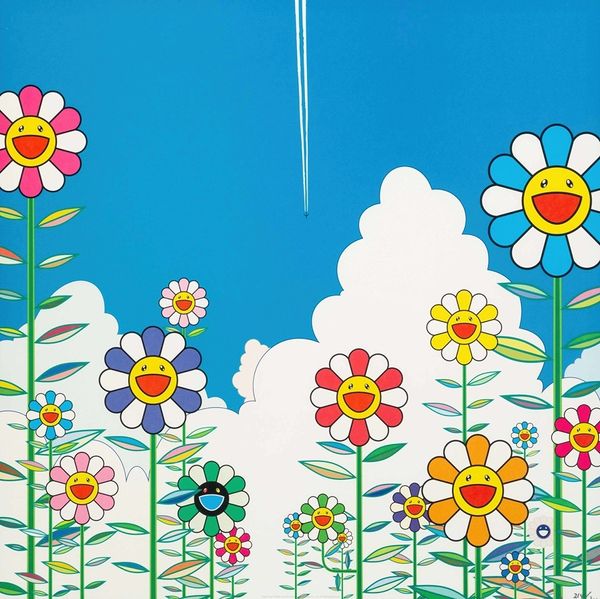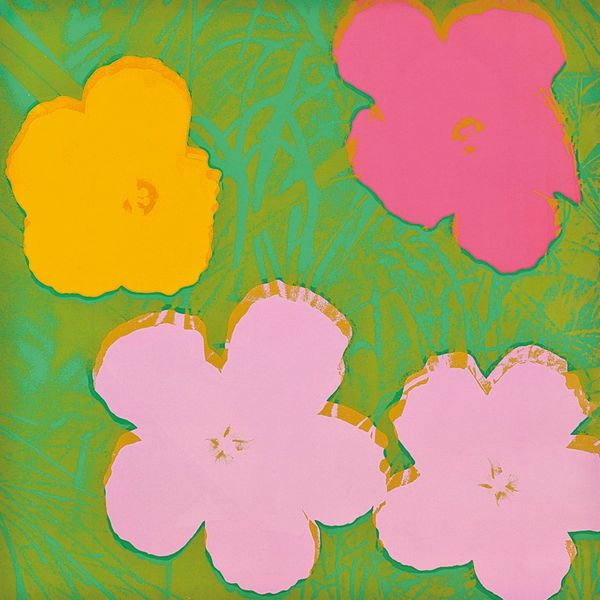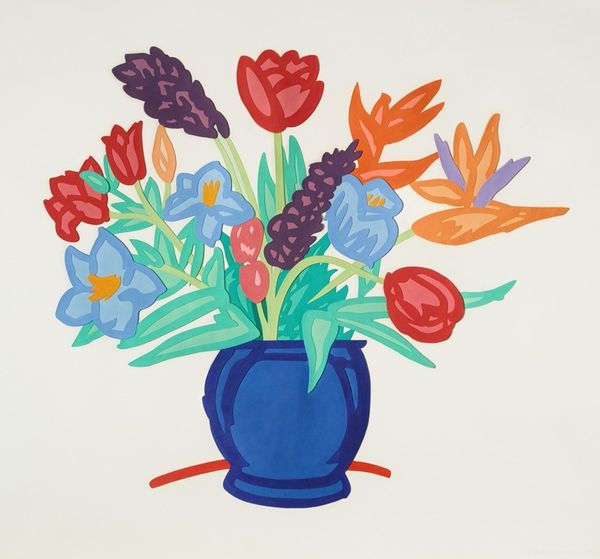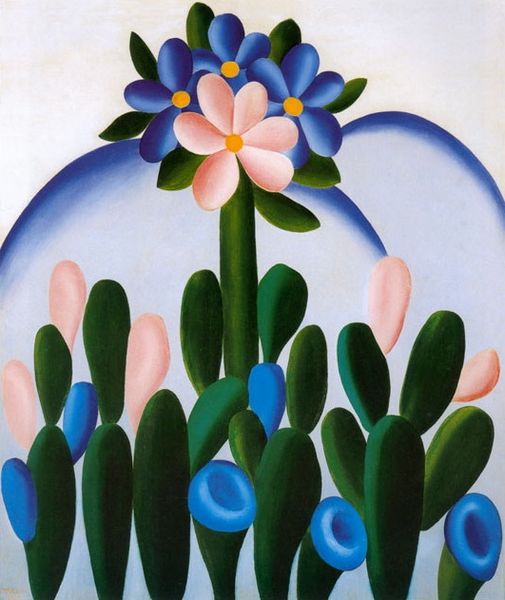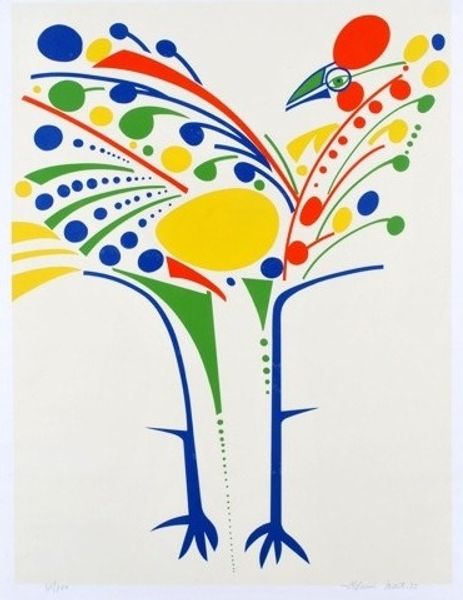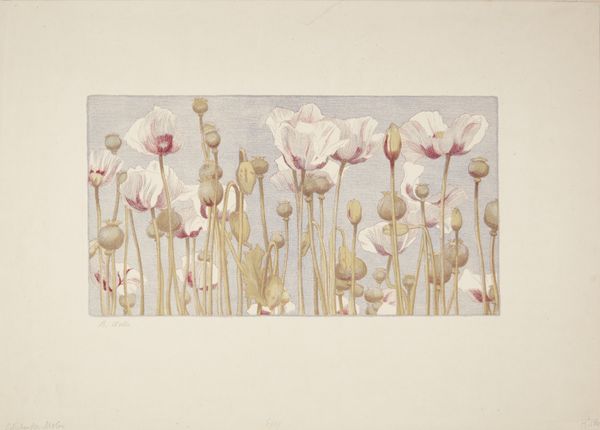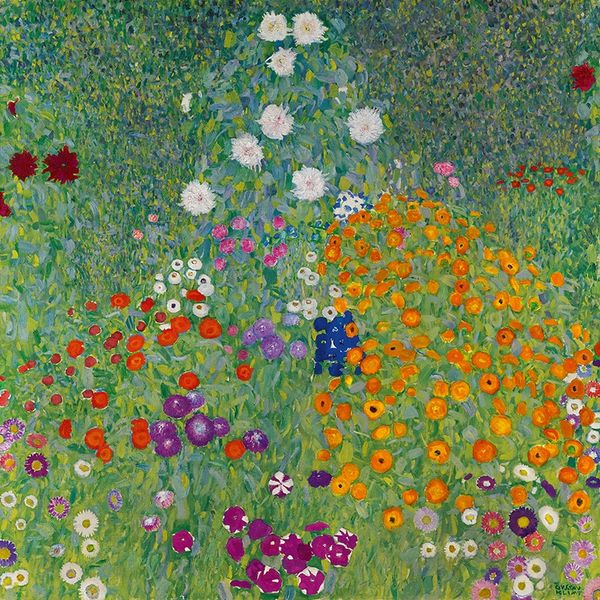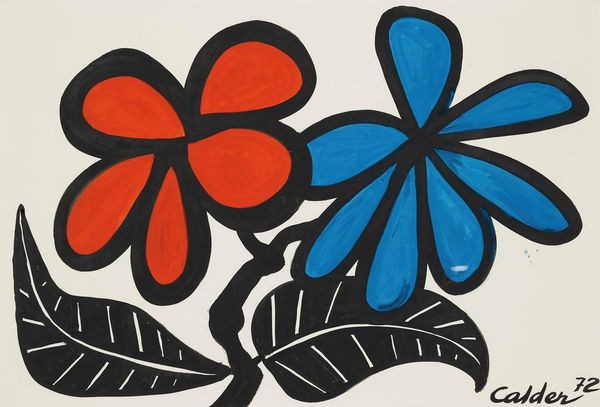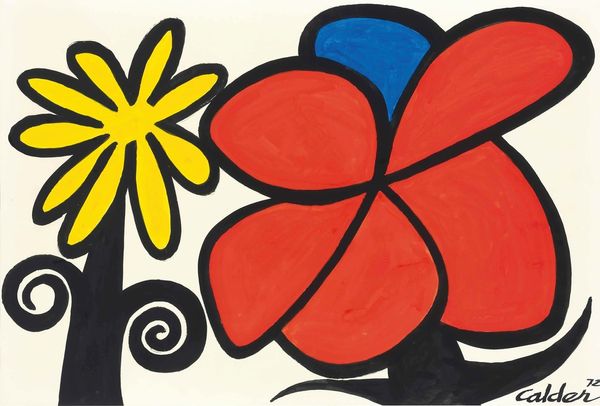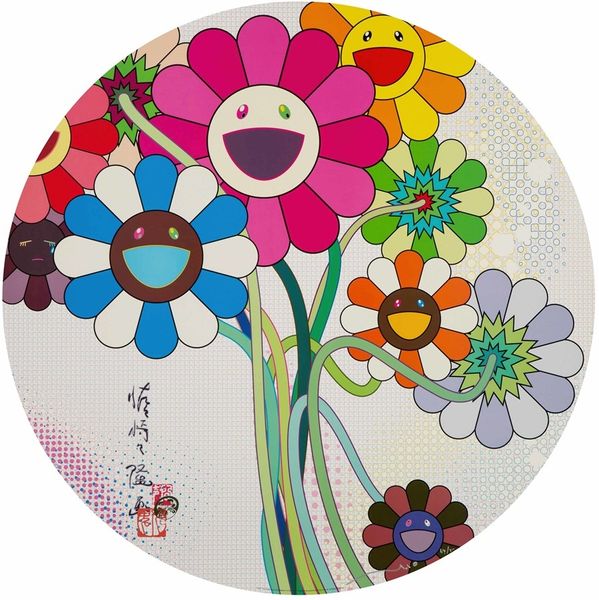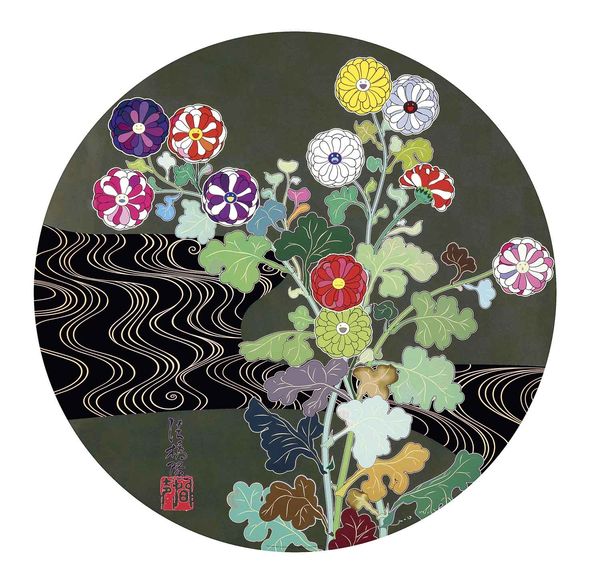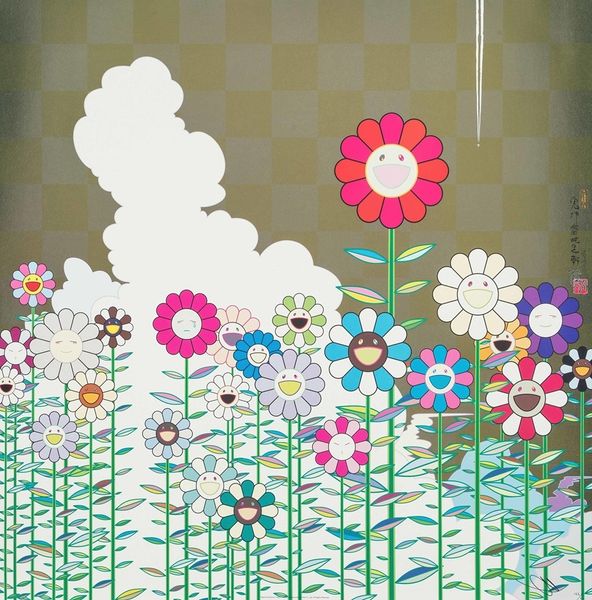
#
neo-pop
Copyright: Takashi Murakami,Fair Use
Editor: This is Takashi Murakami’s "Flowers" from 2002, made with acrylic paint. The cheerful, cartoonish flowers against the blue sky feel…almost deceptively simple. What do you see in this piece beyond the initial burst of color and happiness? Curator: It's interesting that you use the word "deceptive". Murakami's work, particularly his iconic flower motif, operates on many layers. We have to consider the context of post-war Japan and its complex relationship with American consumer culture, anime, and manga. The bright colors and seemingly simple forms are, in my view, a deliberate engagement with pop art aesthetics, yes, but also a commentary on the flattening of culture in a globalized world. Do you see how the "cuteness" or kawaii culture, a huge part of Japanese contemporary identity, plays into this? Editor: I guess so. I hadn't really considered it beyond face value as just…cute. So the flowers are not just flowers; they’re symbols? Curator: Exactly. Think about the historical implications of representing the commodification of happiness and innocence, reflecting perhaps the anxieties of a culture caught between tradition and hyper-modernity. Where do you think Murakami positions himself and the viewer in relation to that anxiety? Is he critiquing, celebrating, or something in between? Editor: It feels like… all of the above, maybe? Like a reflection, not a judgement. It definitely gives me a lot to think about regarding the intersection of culture, art, and commercialism. Curator: And that is precisely the kind of conversation Murakami is hoping to spark. He gives the viewer a glimpse to understand the work that transcends pure artistic value.
Comments
No comments
Be the first to comment and join the conversation on the ultimate creative platform.
